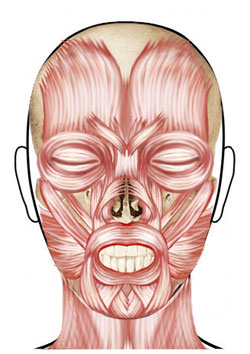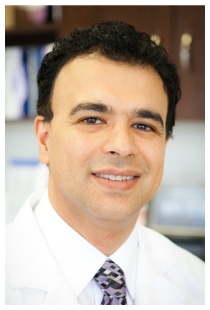Botox In-Depth
Botox: What to expect at the office.
 Before you try and schedule your first BOTOX® Cosmetic or Dysport treatment consultation, you probably have some questions such as: How long will it take? How long will the results last? Will it hurt? Will I still be able to make facial expressions? Here’s what you might expect at our office from the moment you arrive until your procedure is done. (Please note that although this experience is typical, the procedure may be different according to your needs and our doctor’s decision.)
Before you try and schedule your first BOTOX® Cosmetic or Dysport treatment consultation, you probably have some questions such as: How long will it take? How long will the results last? Will it hurt? Will I still be able to make facial expressions? Here’s what you might expect at our office from the moment you arrive until your procedure is done. (Please note that although this experience is typical, the procedure may be different according to your needs and our doctor’s decision.)
The day before your appointment.
Avoid drinking green tea, fish oil and the Aspirin (after checking with your Doctor) 24 hrs before the procedure. This will help minimize the risk of bruising.
The day of your appointment.
Allow time before your appointment for filling out forms and for consulting with the doctor or a member of his staff. If it is your initial visit, Dr. Ghohestani will listen to you and ask you about your expectations. He will then carefully analyze your hyperactive facial lines and provide you a stepwise approach for your face. Sometimes, you may need a laser or filler treatment instead of Botox in order to achieve maximum results. He will also discuss with you preventive measures you can take to keep your face beautiful. Most of Dr. Ghohestani’s patients are happy with his unique approach in maintaining a natural look while looking younger. Don’t forget to bring him some of your head shots of when you were 5, 10 and 20 years younger. Our staff is also trained in skin care and skin care procedures and can answer many of your questions.
Before the procedure.
You’ll be seated in a reclining chair, much like you find in a dentist’s office. No anesthesia is required, although Dr. Ghohestani may choose to numb the area with a cold pack or an anesthetic cream.
The procedure.
Dr. Ghohestani will determine where to administer the injections by examining your ability to move certain facial muscles. The entire BOTOX® Cosmetic or Dysport injection procedure takes approximately 20 minutes.
After the procedure.
There’s no recovery time needed. You’re ready to get on with your day! The most common side effects following injection include temporary eyelid droop and nausea. Localized pain, infection, inflammation, tenderness, swelling, redness, and/or bleeding/bruising may be associated with the injection. Patients with certain neuromuscular disorders such as ALS, myasthenia gravis, or Lambert-Eaton syndrome should not be injected.
Seeing the results.
Within 7-14 days, you may notice an improvement in the moderate to severe deep lines that can last up to 4-6 months. For reasons currently unknown, studies have shown that some patients actually experience relief from chronic headaches as a result of Botox treatment. More study in this area is required to establish the exact clinical reasons for this frequent outcome.
Follow-up visit.
You will be scheduled for a follow-up appointment within 2 weeks for touch-ups.
The Cost of Botox and Dysport
Costs vary over a wide range depending upon the doctor, your region, and the extent of treatment. A lot of doctors and Nurses perform the Botox and Dysport procedures. Not all of them have extensive expertise with the injection, proper dosage, or a medical setting that can offer the highest level of quality care. Dermatologists typically charge more for Botox or Dysport as they are best equipped to perform your procedure. We offer two payment options for Botox treatment: by area or by unit. The beauty of paying by area is you get a guaranteed result in just one payment. If you need a touch-up to achieve desired results, there is no out-of-pocket charge for the additional units. The beauty of paying by unit is if you know you only need a certain amount of Botox to achieve the desire result, this may be a cheaper option. Call our office at (210) 698-6777 to see what specials we may be offering.
For Physicians and Health Care Professionals who attend the TXID Botox and Dysport Training:
What happens to Facial Muscles?
Hyperfunctional lines result from the contraction of the underlying facial musculature. The forehead is a complex of the frontalis muscle with insertions onto fibers of the procerus, corrugator, depressor supercilii, and orbicularis muscles. The frontalis muscle, responsible for the surprised appearance when acting unopposed, mediates elevation of the brow and is primarily responsible for horizontal wrinkles. Soft tissue laxity of the forehead and periorbital area causes brow ptosis and reflex contraction of the frontalis muscle to restore brow position, exacerbating forehead rhytides. Treatment of these rhytides with BOTOX® can increase brow ptosis. The frontalis muscle can also be responsible for the appearance of scowling. However, the main agent responsible for the appearance of scowling is the corrugator muscle. The normal function of the corrugator is as a brow adductor, bringing the eyebrow medial and inferior. Chronic contraction of the corrugator results in deep vertical hyperfunctional lines between the eyes, sometimes referred to as a glabellar crease. The depressor supercilii muscle pulls the medial brow inferior and medially. The last muscle in this group is the procerus muscle, which overlies the nasal root. Contraction of the procerus results in a snout-nose appearance and a horizontal rhytid at the nasal root. The anatomy of hyperfunctional lines in the orbit is intricate. Contraction of the orbicularis oculi muscle is primarily responsible for the clinically observed periorbital crow’s feet. The orbicularis oculi muscle is bordered superolaterally by fibers of the frontalis muscle and medially by the levator palpebrae muscle. Injection of this area requires special cognizance of adjacent musculature to avoid upper lid ptosis.
Drooping eyelids after Botox, Xeomin and Dysport
Drooping eyelids which is also known as ptosis, is one of the most commonly reported side effect of Botox, Dysport and Xeomin. Usually, drooping happens when an unexperienced injector administer the Botox. Approximately 1-5% of patients who receive these injectables complain of sagging in the eyelid area. Drooping eyelids can appear anywhere from few days to few weeks after the injection. When the Botox spreads into neighboring muscles, it may migrate to an eyelid muscle called the levator palpebrae superioris muscle results in drooping of eyelid. In order to avoid this undesirable side effect, Dr. Ghohestani recommends injection Botox in lateral corrugators at least 1 centimeter above the supraorbital ridge and also to avoid the central brow.
******
Why should you choose Texas Institute of Dermatology for Botox, Xeomin and Dysport?
At the Texas Institute of Dermatology, we want you to have an excellent outcome and to feel that your needs and concerns have been promptly addressed in a caring and sensitive fashion. We strive diligently to ensure your satisfaction, comfort, privacy, and safety. All treatments are supervised or performed by a dermatologist with many years of successful experience in a large variety of procedures. Many treatment modalities are available, and we can recommend the one or two that are most likely to meet your needs; we’re here to meet your needs and help you realize your aspirations. At our clinic in San Antonio, Texas, we serve communities throughout Bexar and Kendall counties, including San Antonio, Boerne, Leon Spring, Ralph Fair Ranch, Canyon Lake city; many of our patients also come from San Marcos, New Braunfels, Kerrville, Austin, Wimberley and Corpus Christi.






